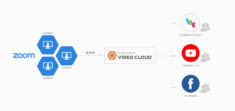World Backup Day
CMMA BlogToday is World Backup Day and we are celebrating and gently reminding IT organizations across the world, backup your data! Though we celebrate it once a year, it does not mean we backup data once a year. Let’s consider 3 reasons why backing up to protect your data is crucial to your organization:
The Rising Tide of Data
Managing data is becoming a challenge for many IT organizations. The continued rising volumes of data is putting pressure on backup strategies that were once effective. IT leaders need to find the latest, fastest, most cost-effective forms of backup solutions that can make sizeable backups manageable and easy to implement. IDC projects that there will be 79.4ZB of data created by connected IoT devices by 2025, growing from 13.6ZB. Unstructured content related to entertainment (creation, production, distribution and consumer consumption) continues to be the largest category of data.” This volume of data presents many challenges so backup methodologies and strategies need to be revisited often. Finding the right backup tools and methodology are an essential piece to finding the right recipe for your organization as is preparing your infrastructure for the vast amount of data that is being generated.
Back Up Regularly to Avoid Disaster
Why do you need to backup anyway? Because you never know. Infrastructure hardware will fail. Malware, such as ransomware will strike, and humans will make errors. There is no question IT Managers must be prepared for those moments when disaster strikes a blow when you least expect. Backing up your data regularly will ensure you can protect and recover data quickly and effectively. In addition, they should be done intelligently to address the hyper-growth and the requirement for hyper-availability. Part of finding the right solution requires an analysis to help determine the value of data to efficiently manage greater volumes that applications are generating. It is a necessity not a luxury to future-proof your infrastructure. This exercise helps organizations acquire the correct tier of technology to not only manage but restore within the specified SLAs of the organization.
Ransomware
Highlighting ransomware is important because of its prevalence in cyberspace. Threats and attacks are getting more aggressive and those ransomware-focused threat actors are using creative means to break into systems and deploy ransomware for the threat actor’s payday (Source: TechCrunch). There is a rule as old as time that has been proven true time and time again:
Keep 3 copies of your data, using 2 different storage media types (object, flash, HDD, tape) 1 offsite (physically separate from the building such as DR site), and 1 offline (completely disconnected from your network).
Keeping a clearly defined data copy offline and air-gapped to protect against malware attack will enable you to retrieve that data and get back up to speed faster and back to business sooner in the case where your network-connected copies are compromised.
Conclusion
World Backup Day is not about backing up just one day of the year. Let today serve as an awareness day to remind enterprises and SMB’s that protecting data by backing it up regularly will prevent disasters that can come in any form. Restoring data from a backup copy will allow businesses to resume operations effectively. There is value in protecting your data. What is the value? In many cases, unquantified. Preserve and protecting your data, whether for the three factors mentioned or to simply provide the continuity of business operations. Learn more about our Enterprise Backup and Archive solutions .

